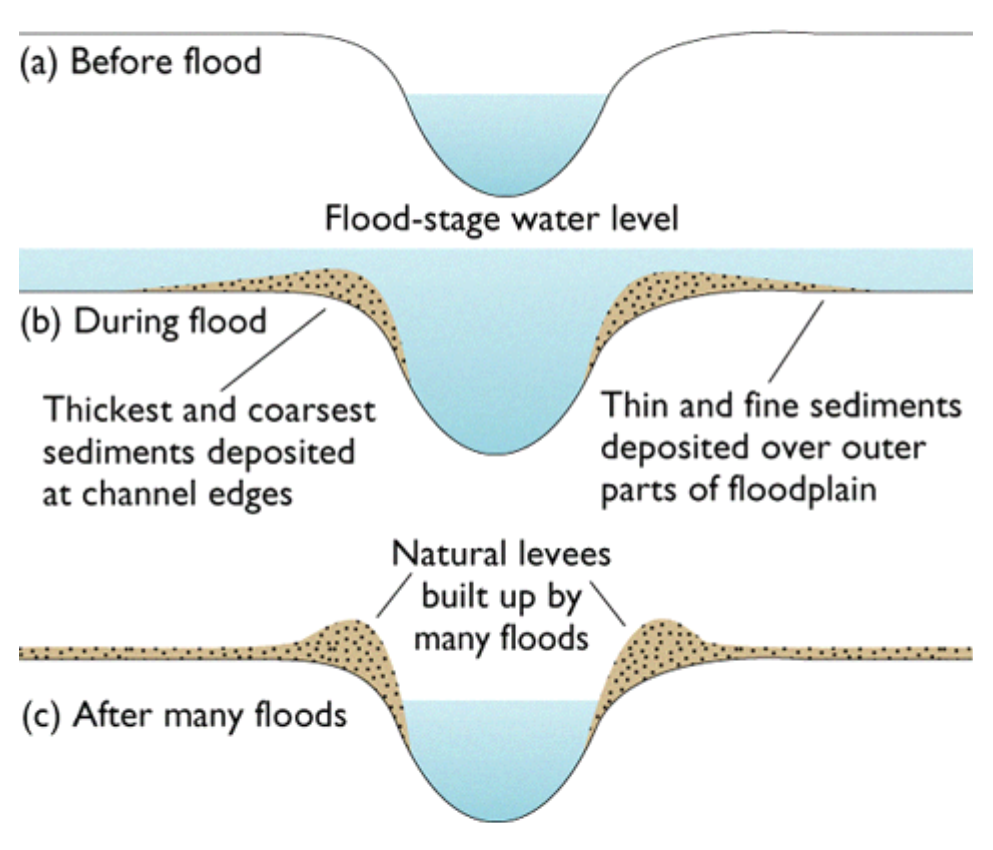River Environments - 1.2 (Fluvial Processes, River Landscapes)
Fluvial Processes
Weathering Processes
Mass movement
Rock Falls: Fragments of rock are continually weathered and eroded until they separate and fall from the cliff as whole parts.
Slumping: The bottom of a valley side slope is cut away by the river flowing at its base making the slope unstable and weathered material slumps down towards the river. Slumping is also helped when the weathered material on the slope is saturated by heavy rain.
Soil Creep: Gravity pulls down the weathered material on the slope downwards to the river, where it is eroded.
Erosion
Transportation
Traction: Heaviest material is rolled along the riverbed. This requires the most energy
Saltation: Sand particles are bounced along
Solution: Minerals dissolved in the water are carried along
Suspension: Small particles are carried within the current
✩ Deposition - The process where material is dropped after being transported by the river current. The material is called sediment
River Landscapes
Upland Landforms
Waterfalls: Occur where a band of hard rock is much more resistant to erosion than the softer rock below it. This softer rock is readily eroded by the force of the water as it falls over the hard cap rock. Gradually, the falling water excavates a plunge pool at the bottom of the falls. Slowly, the hard rock is eroded back by the river and so the waterfall gradually retreats upstream leaving a gorge behind it.

Interlocking spurs: Formed when the river swings from side to side. The main work of the river is cutting vertically downwards into its bed. This means that the river cuts down to flow between spurs of higher land on alternate sides of the valley.

Lowland Landforms
Levees: When a river floods, friction increases on the bank and so increases the deposition across the valley floor. The largest amount of deposition is always in the banks of the river channel. The deposition accumulates, building up the sides of the channel, forming levees. Deposition farther than the levee makes floodplains.
Oxbow Lakes and Meanders: The force of water undercuts the bank on the outside of the ricer, eroding it laterally and pushing the bend farther and farther out. On the inside of the bend, the water moves more slowly, creating more friction and so deposits material. As this erosion and deposition continue, the old meander bend is left isolated from the main channel as an ox-bow lake, and deposition gradually seals off the old meander bend forming a straighter river channel.



Comments
Post a Comment